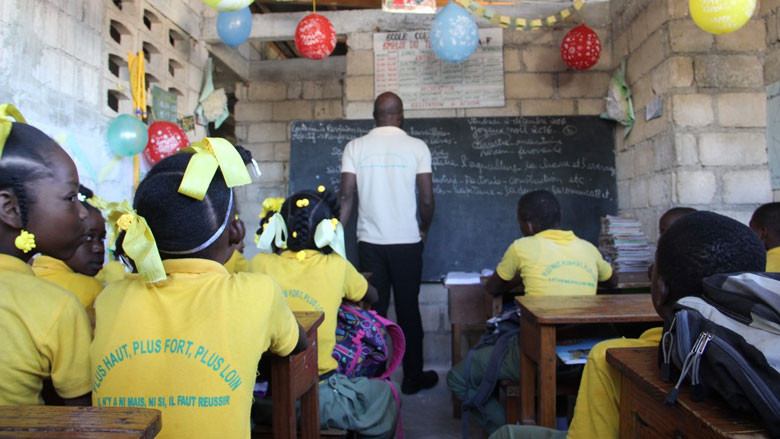Challenge
With a GDP per person of US$673, Haiti is the poorest country in Latin America and the Caribbean and one of the poorest countries in the world. In the last several years, a series of external shocks have hit, including the 2010 earthquake, exacerbating the country’s fragility and reversing the poverty gains achieved since 2001. Haiti’s education sector faced tremendous challenges post-earthquake, including significantly diminished capacities for responding to them. The losses of schools, teachers, and staff from the Ministry of National Education and Professional Training (Ministère de l’Education Nationale et de la Formation Professionnelle, MENFP) compound the problems of a sector that already faced a shortage of schooling infrastructure, trained teachers, and effective governance mechanisms.
On the supply-side, there were simply not enough spaces for children to enroll in free public schools, as four out of five primary schools in Haiti are private. Tuition, even in the lowest-cost private schools, was prohibitive for poor families, especially for those living in rural areas characterized by poverty rates of 82 percent (77 percent living in extreme poverty). Although access to education has improved dramatically over the past twenty years, due to high demand from families and a proliferation of low-cost private schools, challenges still exist regarding late entry and school progression due to the cost burden on families and the relatively low quality of education. While 90 percent of children aged between 6 and 12 are enrolled in school, they start primary school on average two years later than national goals suggest, and once at school, only 50 percent of students successfully reach sixth grade on time.
Approach
The objective of Education for All Project for Haiti: Phase II is to support (i) enrollment of students in select non-public primary schools in disadvantaged areas; (ii) student attendance in select public and non-public primary schools in disadvantaged areas; and (iii) strengthened management of the Haiti’s primary education sector. Project financing aims at (i) improving access to primary education through the tuition waiver program and provision of basic educational services in underserved rural communities; (ii) supporting teaching and learning through a school health and nutrition program, as well as through pre-service and in-service training for primary school teachers; and (iii) improving sector management by building the institutional and monitoring and evaluation capacity of the MENFP

